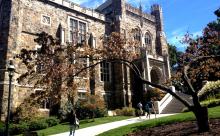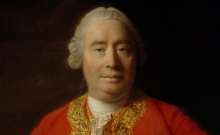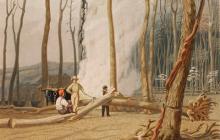
When Kwame Essien looks at a map of the Atlantic Ocean, his eyes are drawn to a point near the equator where the vast ocean begins to narrow like an hourglass and the continents of Africa and South America make their closest approach.
Only 1,600 miles, Essien notes, separates the edge of West Africa from Brazil. From the 16th century through much of the 19th century, countless ships crossed the Atlantic carrying people who had been captured in West Africa to the New World, there to plant and harvest crops or to toil in mines. During this time, 10 to 15 million Africans were enslaved in the Western Hemisphere, nearly five million of them in Brazil.
In the 1800s, a relative handful of people, descendants of African slaves, embarked on a reverse migration of their own volition. Uprooting themselves from Brazil, the only home they knew, they journeyed back to Africa to seek the homes of their ancestors.
Essien, an assistant professor of history and Africana studies, tells the story of these pilgrims and their descendants in his book, Brazilian-African Diaspora in Ghana: The Tabom, Slavery, Dissonance of Memory, Identity and Locating Home. The book examines “the complexities of reverse migrations and imagining a distant ancestry over the Atlantic waters, as well as the challenge of reclaiming a ‘lost’ heritage.” The book also explores what Essien calls the “unmatched fortitude” of modern-day descendants of the early migrants, now living in Ghana, as they attempt to locate the homes in Brazil where their ancestors lived.
Other books have been written about the migration of former slaves from the New World back to Africa, says Essien, but his is the first academic book to look at migrants who went from Brazil to Ghana. The book traces the lives of four Brazilian-Ghanaian family leaders. João Antonio Nelson, who arrived in Ghana around the 1830s with his parents when he was 3, became the second Brazilian chief (leader of the Brazilian diaspora) in Accra, Ghana’s capital. Ferku, a freed Brazilian slave, settled in Lagos, Nigeria, moved to Accra and then crisscrossed the Atlantic before dying in Lagos in the 1930s, leaving behind an estranged wife and an unsettled land dispute. Georgina T. Woode, the current chief justice of Ghana’s Supreme Court, made a pilgrimage to her ancestors’ home in Brazil in 2011. George Aruna Nelson, grandson of João Antonio Nelson, died in 2009 at the age of 93.
“The story of the Brazilian-African diaspora in Ghana is so complex,” says Essien, “that I simplified it by writing only about the families for whom I could find court records and other documents.”
In his book, Essien includes photos he obtained from government and family records. Most notable is a black-and-white photo on the title page of a 19th-century sailing ship. The boat is moving across the water, Essien says, offering symbolic promise to the African slaves in Brazil.
“The migrants put their trust in whoever was steering the ship to take them to the place that might be their home. The ship was the point connecting the known and the unknown. Not everyone knew where they were going, but everyone knew they had to go on, they had to leave Brazil. If they got on the ship, they might find their home.
“There were no guarantees they would find their home. Even after they made it to Africa, there was no guarantee that being there would ensure their freedom. So the boat represented a risk that people took because there was no guarantee of freedom at all in Brazil.”

































